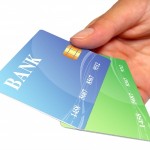U.S. consumer debt rose in November, Fed says
The U.S. Federal Reserve said Friday that consumer debt increased for the second straight month to $1.3 billion during November, as more Americans bought more cars and spent more for schooling toward the end of the year. October saw an increase of $7 billion according to Federal Reserve data.
Growth came mostly from auto and student loans. But credit card debt dropped for the 27th straight month. For November, credit card debt shrank 6.3 percent from 8.1 percent in October.
The annualized rate for total borrowing was recorded at $2.4 trillion, just a shade higher than the $2.39 trillion recorded in September which is the lowest mark in four years, and 6.9 percent lower than the peak of $2.58 trillion in July 2008. The amounts reported are not adjusted for inflation.
U.S. households have been thrifty since the start of the recession in late 2007. The muted consumer spending has not been good to the economy since it accounts for about 70 percent of overall activity.
Some economic experts predict only marginal spikes in borrowing while joblessness remains high and there's a trickle of jobs being created.
"Household attitudes toward the use of credit cards soured during the Great Recession and it is going to take time before many people get comfortable with using them again," Ellen Beeson Zentner, senior economist at Bank of Tokyo-Mitsubishi, told AP. "We have a long way to go before credit normalizes," she added, pointing out that overall consumer borrowing is still down 2.2 percent year-on-year.
